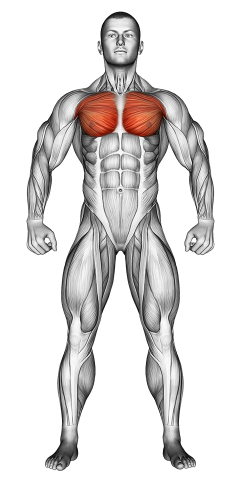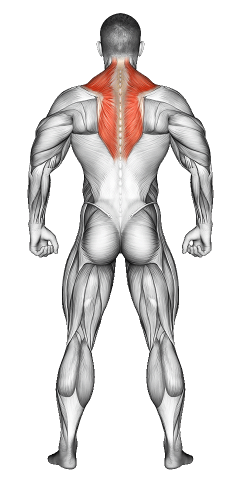Dumbbell Fly On Step: Video Tutorial & Exercise Guide

Written By: Claude Michael
Updated: Oct 13, 2024
| Workout | Dumbbell Fly On Step |
| Primary Muscle Group | Chest |
| Secondary Muscle Group | Shoulders |
| Equipment Required | Dumbbell, Step/Bench |
| Force Type | Push |
| Mechanics | Isolation |
| Exercise Type | Strength |
| Difficulty | Intermediate |
Dumbbell Fly On Step: Video Tutorial & Exercise Guide
- 1.Dumbbell Fly On Step: Muscle Groups
- -1.1Primary Muscle Group
- -1.2Secondary Muscle Group
- 2.Dumbbell Fly On Step: Step-by-Step Guide
- 3.Dumbbell Fly On Step: Overview
- 4.Dumbbell Fly On Step: Benefits
- 5.Dumbbell Fly On Step: Pro Tips & Advanced Techniques
- 6.Dumbbell Fly On Step: Progression Plan
- 7.Dumbbell Fly On Step: Frequently Asked Questions (FAQs)
Secondary Muscles Group
Dumbbell Fly on Step: Step-by-Step Guide
- Step 1: Begin by lying on a step or bench with your feet flat on the ground. Hold a dumbbell in each hand with your arms extended above your chest, palms facing each other. Your back and head should be fully supported by the step or bench.
- Step 2: Engage your core and keep a slight bend in your elbows. This will be your starting position.
- Step 3: Slowly lower the dumbbells out to your sides in a wide arc, keeping your elbows slightly bent. Focus on stretching your chest as you lower the dumbbells to about chest level or slightly lower.
- Step 4: Once you feel a good stretch in your chest, bring the dumbbells back togClaude in a controlled motion, squeezing your chest muscles at the top of the movement.
- Step 5: Repeat for the desired number of reps, maintaining control and tension throughout the entire movement.
Dumbbell Fly on Step: Overview
The dumbbell fly on a step is a chest isolation exercise that targets the pectoral muscles, particularly the outer and inner parts of the chest. By performing the fly on a step, you allow a greater range of motion, which increases the stretch and contraction of the chest muscles, promoting growth and strength.
This exercise is ideal for building chest size and improving muscle definition. The movement pattern mimics a hugging motion, making it effective for isolating the chest muscles without overly engaging the triceps or shoulders.
Dumbbell Fly on Step: Benefits
The dumbbell fly on a step enhances chest muscle activation by allowing a greater stretch at the bottom of the movement compared to flat bench flyes. This increased range of motion promotes muscle growth and flexibility.
This exercise isolates the chest muscles, making it a perfect addition to chest day workouts. It helps improve the definition and shape of the chest, especially when paired with compound pressing movements like bench presses or push-ups.
Additionally, the dumbbell fly helps improve shoulder mobility and stability while keeping the triceps and shoulders less involved than in pressing movements, allowing for focused chest engagement.
Dumbbell Fly on Step: Pro Tips & Advanced Techniques
Keep your movements slow and controlled throughout the exercise to maximize muscle activation. Avoid letting the dumbbells drop too low, as this can strain your shoulders. For an added challenge, pause briefly at the bottom of the movement for increased time under tension. Ready to sculpt your chest? Let’s fly!
Dumbbell Fly on Step: Progression Plan
Beginner
Intermediate
Advanced
Dumbbell Flys on step: Frequently Asked Questions (FAQs)
What muscles do Dumbbell Flys on Step target?
+This exercise primarily targets the pectoral muscles, particularly the outer chest, while also engaging the shoulders for stabilization.
Are Dumbbell Flys on Step suitable for beginners?
+Yes, this exercise is suitable for beginners, but it’s important to start with lighter weights to master proper form. Focus on feeling the stretch and contraction in your chest.
How can I make Dumbbell Flys on Step more challenging?
+To increase the difficulty, use heavier weights, slow down the tempo of the reps, or add a pause at the bottom of the movement. You can also superset this exercise with pressing movements for added intensity.
How often should I include Dumbbell Flys on Step in my routine?
+Include this exercise 1-2 times per week as part of your chest workout. It pairs well with other chest exercises like bench presses or push-ups to create a balanced chest routine.
What common mistakes should I avoid when doing Dumbbell Flys on Step?
+Avoid dropping the dumbbells too low, as this can place excessive strain on your shoulders. Keep your movements slow and controlled, and ensure you are engaging your chest throughout the exercise.
Share
Don’t Wish for It, Work for It – Join the FlexXP Newsletter Today!
Thank you for signing up for the FlexXP Newsletter!
This site is protected and the Google Privacy Policy and Terms of Service apply.

